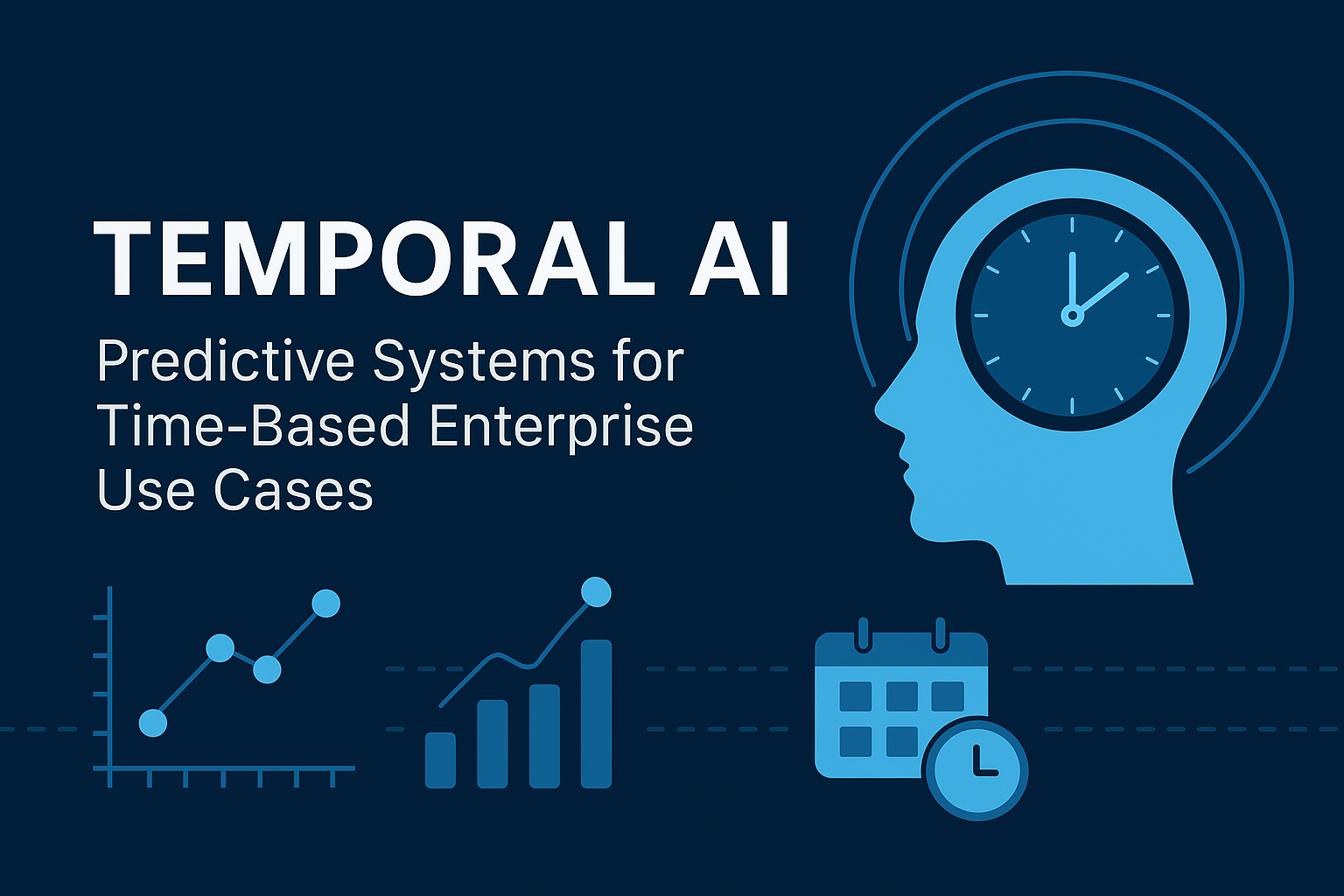
As businesses race toward real-time operations, a new frontier in artificial intelligence is gaining traction: Temporal AI. This class of AI focuses on modelling and interpreting time-dependent data, unlocking predictive insights that conventional models often miss. Whether forecasting energy demand, detecting fraud, or anticipating equipment failure, temporal intelligence is becoming a cornerstone of modern enterprise decision-making.
What is Temporal AI?
Temporal AI refers to using machine learning and deep learning techniques to analyse time-series data, information collected at successive time intervals. Unlike static datasets, time-series data reflects a system’s evolution, capturing trends, seasonality, and anomalies. Temporal AI systems are designed to understand these patterns and predict future states, enabling proactive rather than reactive strategies.
Core technologies behind Temporal AI include:
- Recurrent Neural Networks (RNNs) and Long Short-Term Memory (LSTM) networks
- Temporal Convolutional Networks (TCNs)
- Transformers for time-series (like Time2Vec and Temporal Fusion Transformers)
- Probabilistic models for uncertainty-aware predictions
Enterprise Use Cases
Temporal AI is especially impactful in scenarios where timing is critical. Key applications across industries include:
1. Predictive Maintenance
Manufacturers use Temporal AI to monitor equipment performance over time and predict failures before they occur. By identifying early warning signals from sensors, enterprises reduce downtime and avoid costly repairs.
2. Financial Forecasting
Banks and fintechs rely on Temporal AI for fraud detection, credit risk analysis, and market trend predictions. These systems adapt to fast-changing financial environments and help institutions act on early indicators.
3. Supply Chain Optimisation
Retailers and logistics providers use it to forecast demand, manage inventory, and optimise delivery routes. Time-aware models adjust to seasonality and real-world disruptions like weather or geopolitical events.
4. Energy Load Forecasting
In the utilities sector, accurate demand forecasting enables better load balancing, pricing strategies, and resource allocation, particularly with the rise of renewable energy sources.
5. Healthcare Monitoring
Hospitals and digital health providers use Temporal AI to analyse patient vitals over time, predict health events, and personalise treatment pathways.
Why Traditional AI Falls Short
Standard machine learning models typically assume that data points are independent and identically distributed (i.i.d.). However, time-series data violates this assumption, past states influence future outcomes. Ignoring temporal dependencies leads to inaccurate forecasts and missed opportunities.
Temporal AI introduces sequence awareness. It understands that an anomaly might only be significant if it deviates from a time-based pattern or that an event’s meaning is contextual based on what happened before.
Designing for Time-Based Systems
Building effective Temporal AI systems involves more than just feeding data into a model. It requires:
- Rich temporal datasets with consistent sampling intervals
- Domain-specific features such as lag variables, rolling averages, and calendar effects
- Validation techniques like walk-forward validation, suited to non-stationary data
- Interpretability, especially in regulated industries like finance or healthcare
Modern AI platforms now integrate time-series pipelines, offering plug-and-play forecasting models, anomaly detection, and real-time alerting.
Looking Ahead
As enterprises push for real-time responsiveness, the ability to predict “when” something will happen becomes just as important as predicting “what” or “why.” Temporal AI sits at this intersection, combining data, time, and intelligence to enable truly predictive enterprise systems.
In an age of increasing complexity, understanding your business’s rhythm and responding accordingly may be your biggest competitive advantage.

Leave a Reply